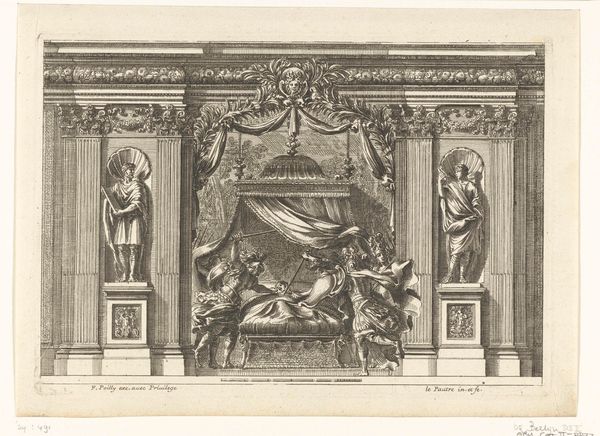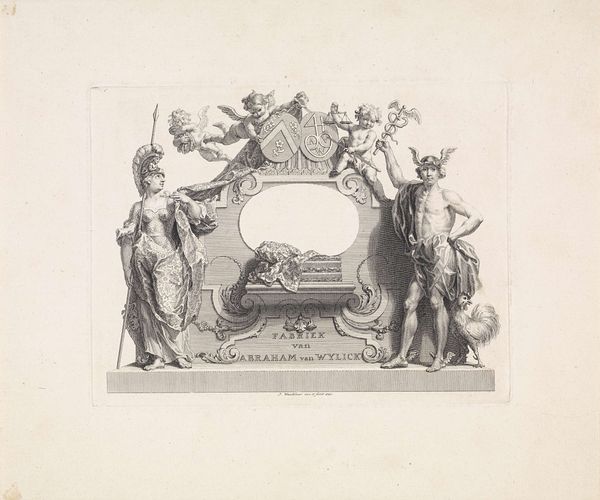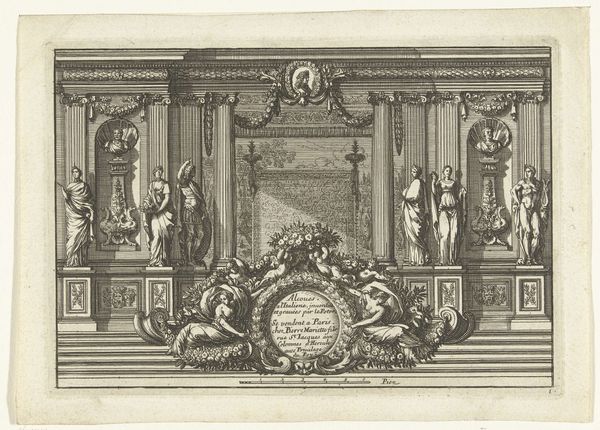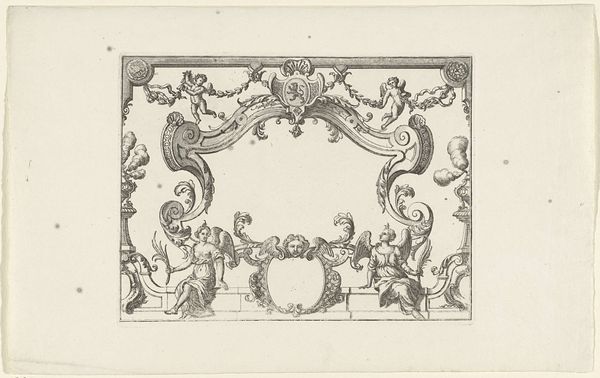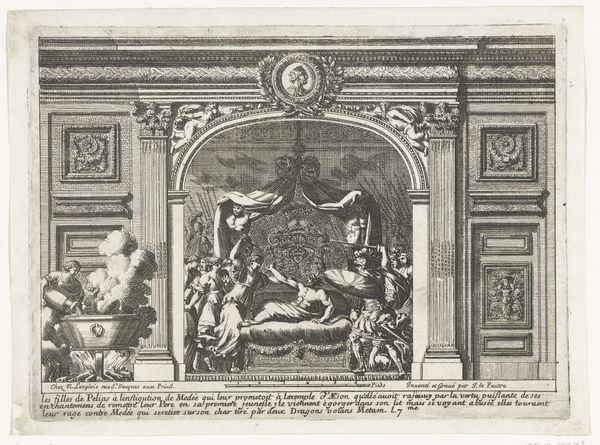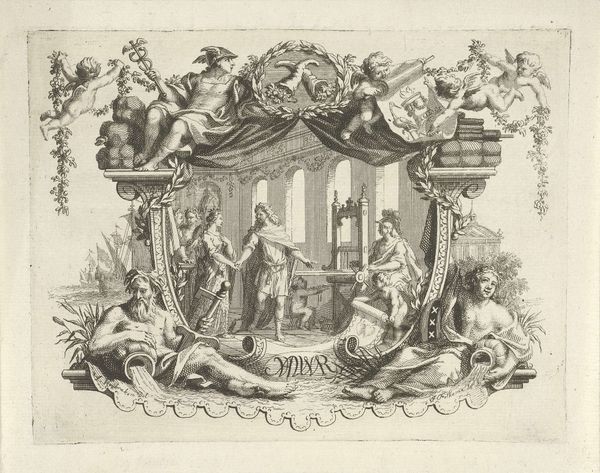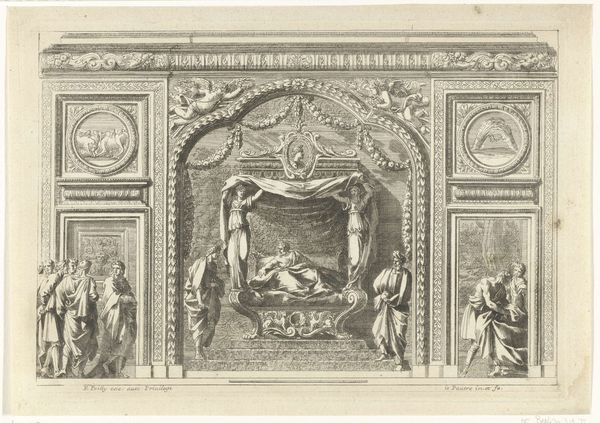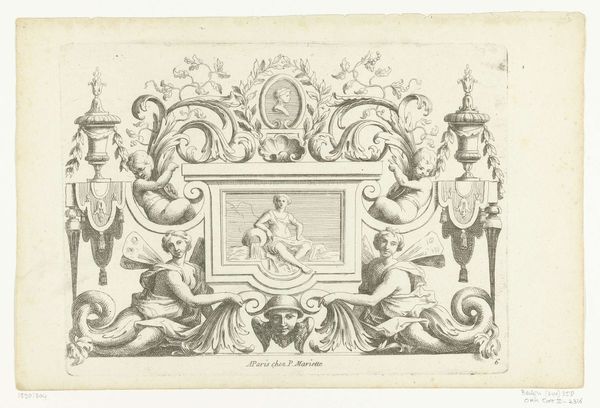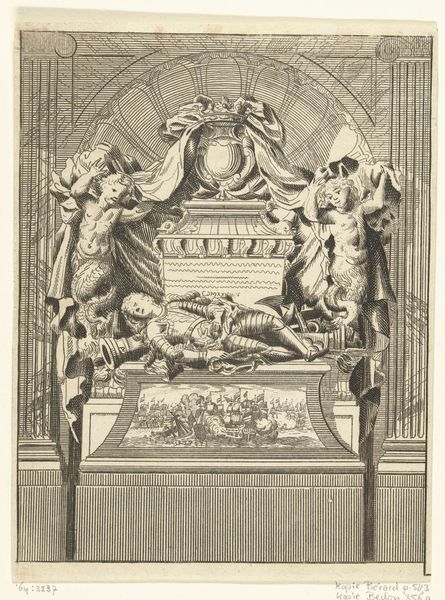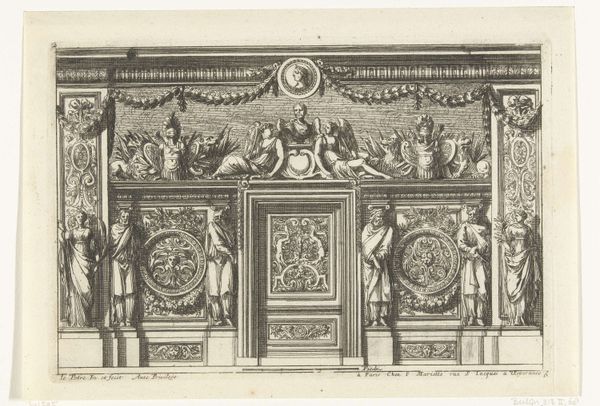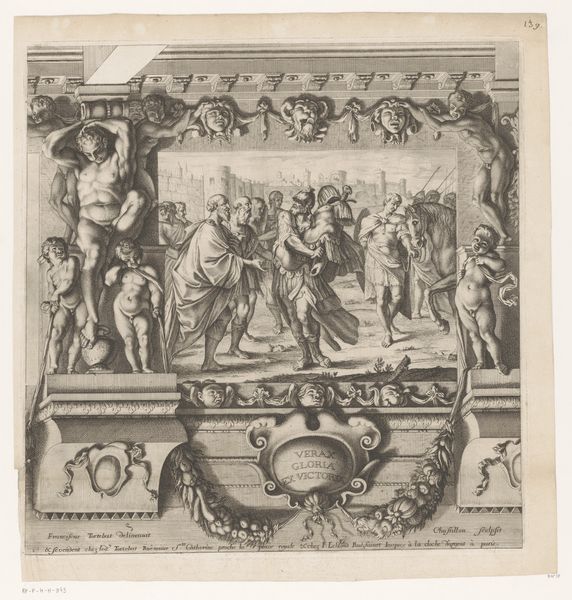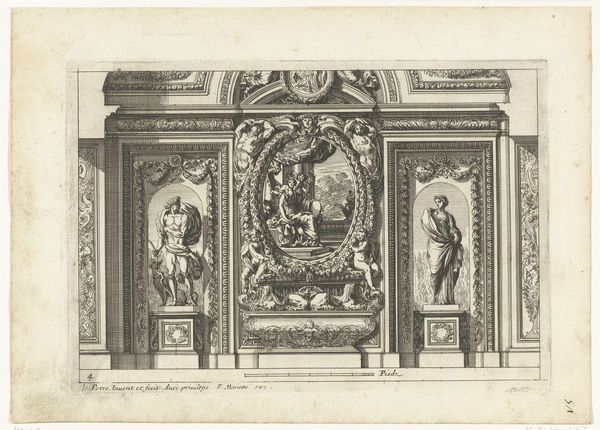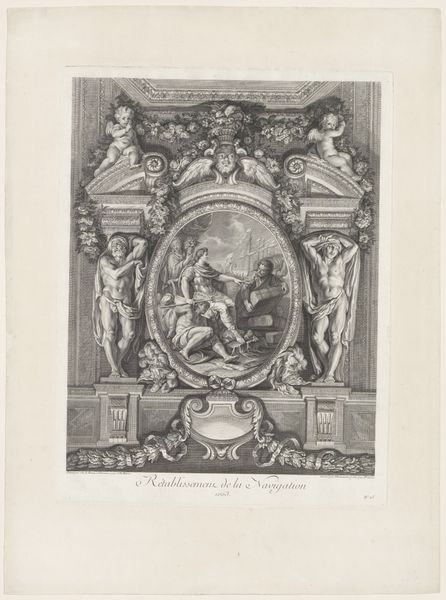
print, engraving
#
allegory
#
baroque
# print
#
pen sketch
#
old engraving style
#
history-painting
#
engraving
Dimensions: height 53 mm, width 87 mm
Copyright: Rijks Museum: Open Domain
Editor: This print, "Vignet met een huwelijksvoltrekking", whose artist is listed as anonymous and dated somewhere between 1700 and 1800, is located at the Rijksmuseum. It's rendered in an old engraving style and depicts cherubs flanking a wedding scene, with what looks like pen sketches in the design. What's your interpretation of this engraving, keeping its baroque style in mind? Curator: I see a careful manipulation of materials and their accessibility during the period. Engravings, while seemingly "high art", were fundamentally about reproduction and dissemination. Consider the socio-economic implications: who had access to these images? What were they used for? It moves beyond just the aesthetic and touches upon issues of labor, skill, and the social life of images. Editor: That's interesting, so you are seeing more of a social statement than an artistic creation. In that light, the wedding scene—is it possibly less about the romantic ideal of marriage and more about...social transaction, or societal expectation? Curator: Precisely! We could also think about the etymology of the term "vignet" as itself an element of mass-produced book decoration. Why choose to decorate with a wedding, an already fraught symbol of property transfer? Who is benefitting from these mass produced decorations, and what are they suggesting about marital structures? Editor: So you’re emphasizing the material means of production – the printmaking process – and connecting that to the cultural context of marriage and maybe even early consumerism in the 18th century. The wide availability of such art transforms its initial role. Curator: Exactly. The materiality itself speaks to broader systems of power and consumption. What started as decoration is now itself the carrier of potent ideas and assumptions. Editor: Thank you for clarifying. I would have remained focused only on its artistry and aesthetics. Curator: And I've enjoyed reflecting on how this small object reveals the period's larger cultural preoccupations through its means of production and dissemination.
Comments
No comments
Be the first to comment and join the conversation on the ultimate creative platform.
